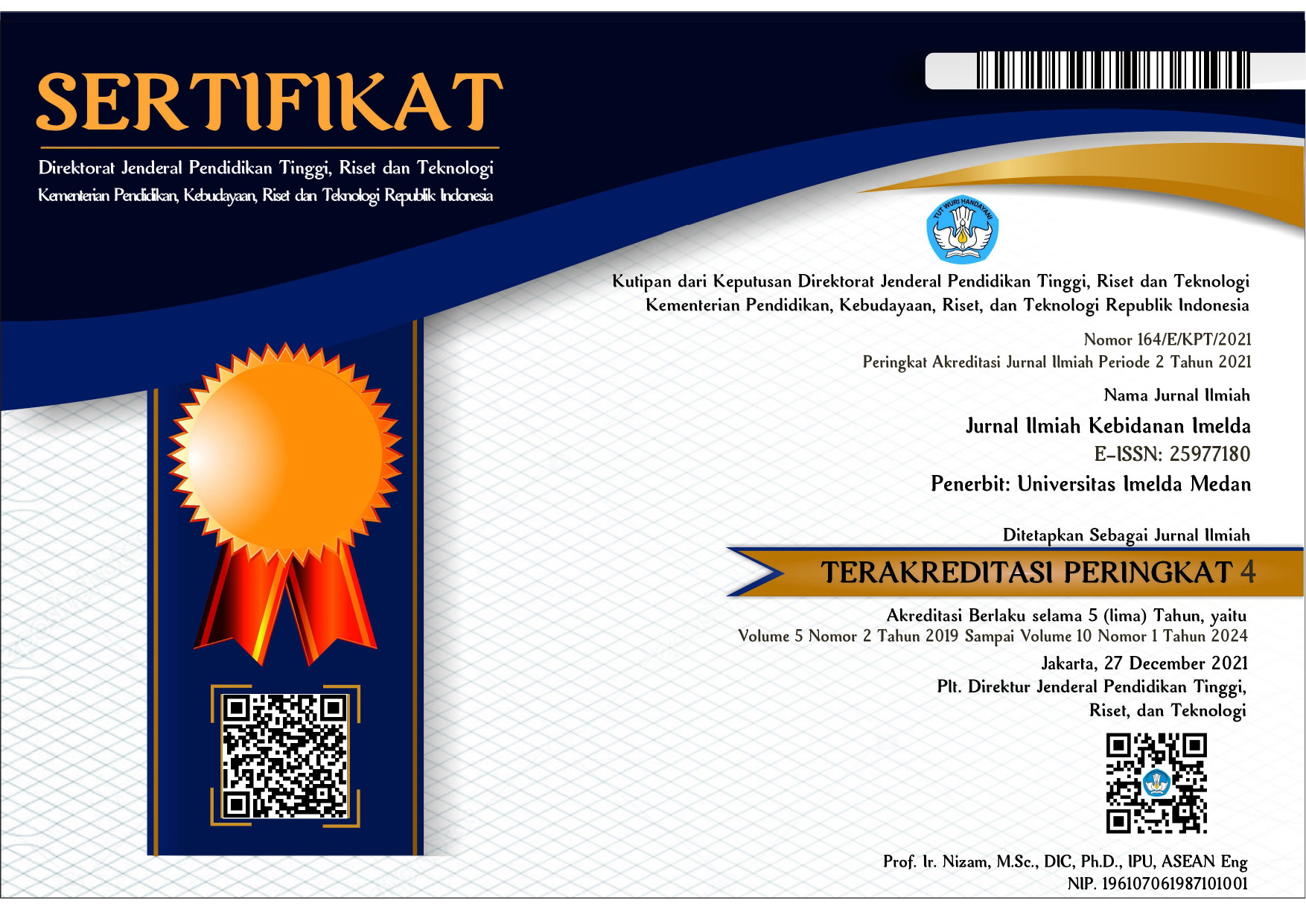HUBUNGAN EKSTRAK DAUN KENTANG MANIS DENGAN PRODUKSI ASI DI KLINIK SITI HAJAR MEDAN
DOI:
https://doi.org/10.52943/jikebi.v7i1.525Keywords:
Breas milk Postpartum mothers Sweet potato leavesAbstract
Breast milk (breast milk) is an emulsion of fat contained in a solution of protein, lactose, and organic salts which will be secreted by both breast glands as the main source of food for the baby. Increasing milk is very necessary for mothers by consuming foods such as: sweet potato leaves, the content contained in sweet potato leaves is low in fat and cholesterol etc. Sweet potato leaves can increase milk production because sweet potato leaves contain lactagogum. The purpose of this study was to determine whether or not there was a relationship between consuming sweet potato leaf extract and an increase in breast milk production at the SitiHajar Medan clinic, Marelan. Methods: pre = post test. This study measured the mother's milk before and after being given sweet potato leaves from January 2021 to February 2021. Samples were taken at the SitiHajar Medan clinic with a total of 50 samples, with the inclusive criteria being mothers who gave birth normally and healthy babies. Univariate analysis was carried out to describe the variables with the results of 46% as many as 23 (people) intervention of mother's milk production increased after consuming sweet potato leaves compared to before consuming with a result of 4% as many as 2 (people). Bivarate analyst to determine the relationship between independent and variables using the Wilcoxon test, based on the results of the Wilcoxon test, the p-value is 0.000 (<0.05). and In conclusion, there is a significant relationship between consuming sweet potato leaves and increasing breast milk production.
References
Bibi Ahmad ChahyantodanKatrinRoosita, (2015) Hubunganantaraasupan vitamin A denganproduksi ASI padaibunifas. Balitbangkes.(2019).Laporan Nasional RISKESDAS2018.
Doko, T. M., Aristiati, K., &Hadisaputro, S. (2019). PengaruhPijatOksitosinolehSuamiterhadapPeningkatanProduksiAsipadaIbuNifas. JurnalKeperawatanSilampari, 2(2), 66–86.https://doi.org/10.31539/jks.v2i2.5 29 Garovic, V. D. (2019).
DinasKesehatanProvinsi Sumatera Utara. ProfilKesehatan Kota Medan 2016. 2016;46-7.
Soetjitiningsih (2016). Seri GiziKlinik ASI PetunjukUntukTenagaKesehatan. Jakarta : EGC.
Saifuddin, Azwar (2015). MetodePenelitian Yogyakarta: PustakaPelajarBasd.
Suprati ML. TepungUbiJalarPembuatanDanPemanfaatannya. Kanisus. Yogyakarta 2017.
SoekijoNotoatmojo. BukuMetodologiPenelitianKesehatanSoekijoNotoatmodjo_Jakarta: RenikaCipta 2017.
Proverawati, A. (2017). KapitaSelekta ASI Dan Menyusui. Yogyakarta :NuhaMedika.
Pollard, M. (2016). ASI AsuhanBerbasisBukti. Jakarta: PenerbitBukuKedokteran EGC.
Pramita,E (2017), Pekan ASI Sedunia 2017: Mari MendukungKeberhasilanIbuMenyusui, Jakarta, MajalahKartini.
Ritawati, (2017). JurnalPenelitianSukses ASI EksklusifDenganDaunUbiJalarPadaIbuNifas. (diaksestanggal 13 februari 2016)
Rahmawati Anita.(2017) Analisisfaktor yang mempengaruhiProduksi Air SusuIbu (ASI) PadaIbuMenyusui Yang Berkerja. JurnalNersdanKebidanan 4(2): hal 134-140.
WHO. (2017) Guidelines on Optimal feeding of low birth weight infants in lowand middle-incomecountries. WHOLibrary Cataloguing- in-Publication Data










